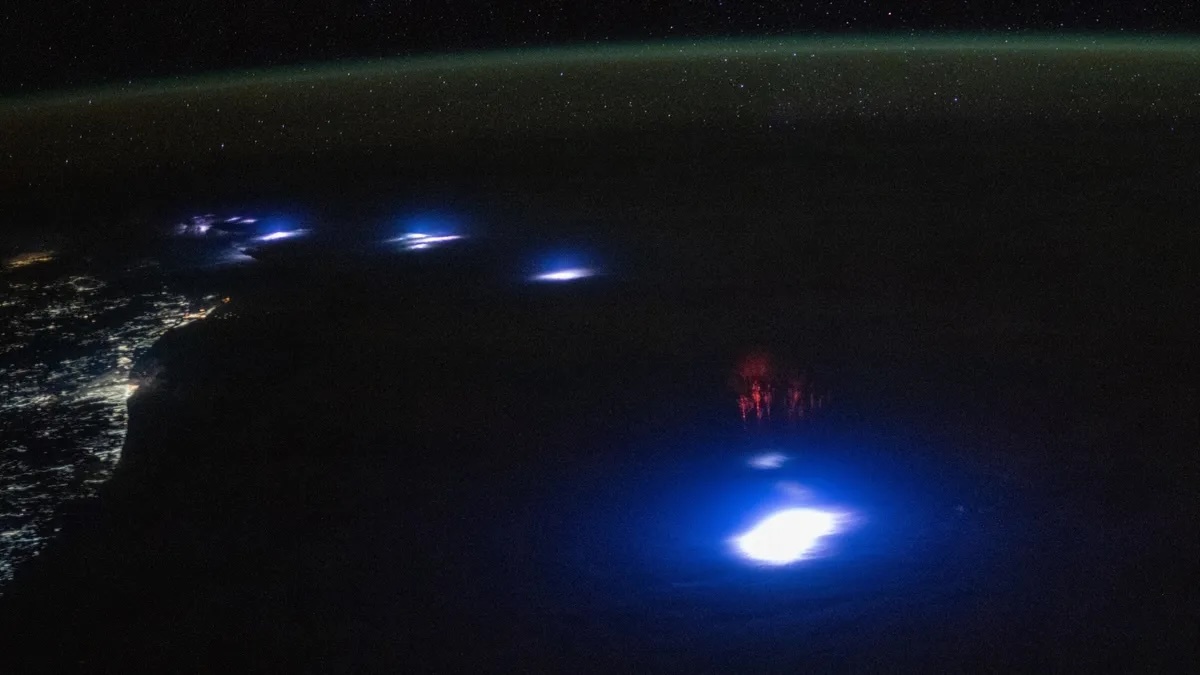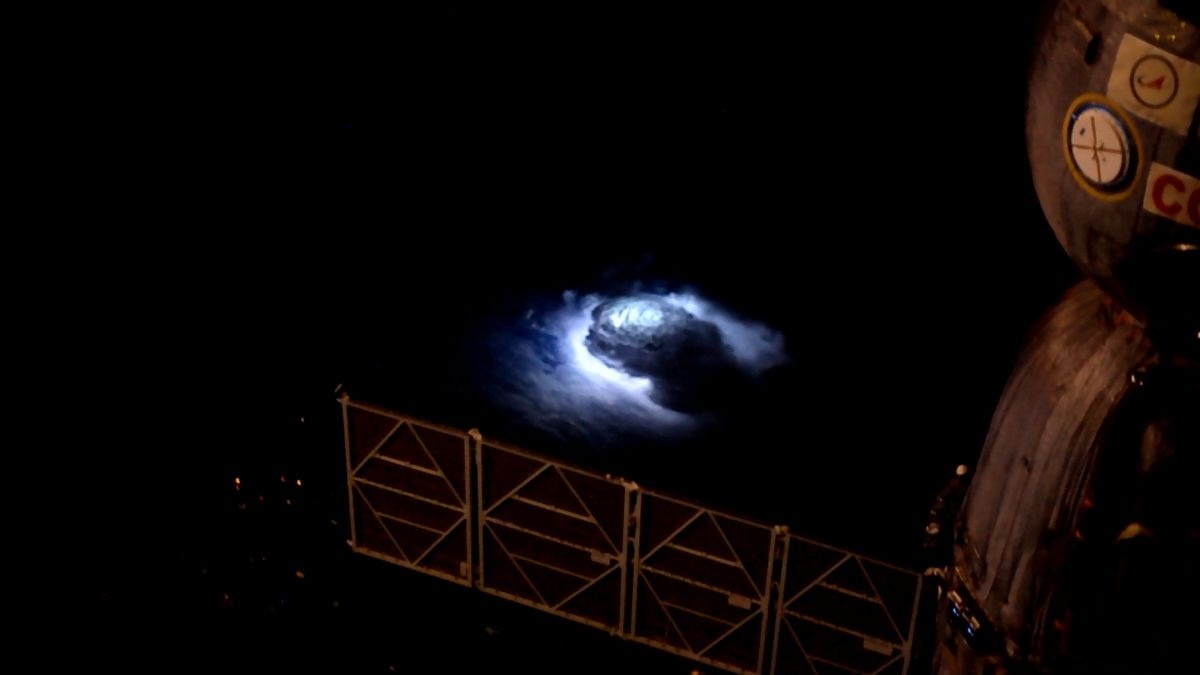27.06.2024
NASA astronaut Matthew Dominick said he was "super lucky a few weeks ago when shooting a timelapse of a lightning storm."

A rare red sprite captured from the International Space Station posted on X (formerly Twitter) on June 20, 2024, showing an event earlier in the year. The image was taken off the coast of South Africa. (Image credit: Matthew Dominick/NASA/X)
An astronaut captured an elusive glimpse of red lightning from space.
NASA astronaut Matthew Dominick imaged the rare red sprite phenomenonfrom the International Space Station earlier in the year, which may build on earlier studies of the lightning type on the orbiting complex.
"Super lucky a few weeks ago when shooting a timelapse of a lightning storm off the coast of South Africa. One of the frames in the timelapse had a red sprite," NASA astronaut Dominick wrote on X, formerly Twitter, on Thursday (June 20).
"A rare event. My knowledge is pretty much just from Wikipedia but I want to know more," he added, adding in a second post that he would like to collaborate with "red sprite experts" for "tips on how to capture more of these."
Red sprites, also known as red lightning, occur during some extremely intense thunderstorms. Most lightning flashes move down from the clouds to the ground, a sprite goes in the opposite direction: up, into the upper atmosphere.
These sprites are very brief, lasting only for about a millisecond, which makes them difficult to observe even with professional equipment from orbit. That said, they can be very large, sometimes spanning as large as 30 miles (48 km) across.
Lightning has been studied for many years on the ISS, including 2015 images of different phenomena (blue jets, or upside-down lightning) that European Space Agency astronaut Andreas Mogensen captured from space. His photos made the covers of the top-tier prestigious journals Science and Nature. Mogensen also managed to capture red sprites of his own during his latest 2023-24 excursion to space.

A thunderstorm that European Space Agency astronaut Andreas Mogensen captured in 2015 from the International Space Station. (Image credit: ESA/NASA)
Mogensen used a new camera during his second excursion on the ISS to "study the formation and development of these types of lightning in much more detail," Mogensen told Space.com last year. The camera is neuromorphic, obtaining images differently than the way standard cameras do.
"Instead of taking images by collecting light through the camera shutter, the camera measures differences in light and uses that information to create an image," ESA officials wrote in a statement in September 2023.
The lightning may also be changing due to human-induced climate change, according to an April 2023 presentation on the study at the European Geophysical Union hybrid conference held in Vienna and online.
The new study, lead author Olivier Chanrion with DTU Space said at the time, provides "the opportunity to analyze and quantify their (lightning storms') impact, and to check to which extent they are associated with overshooting thunderclouds tops that inject greenhouse gases and aerosols in the stratosphere."
Quelle: SC
